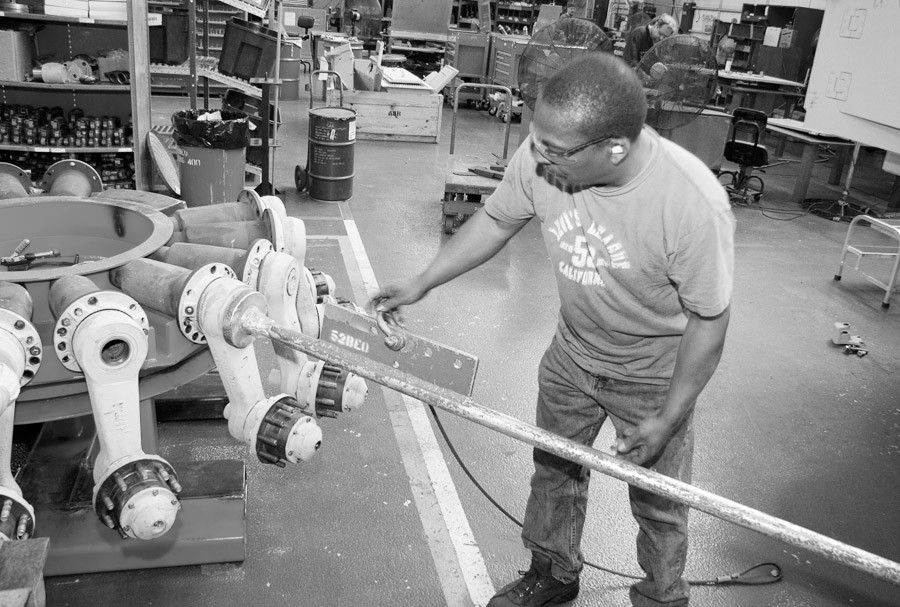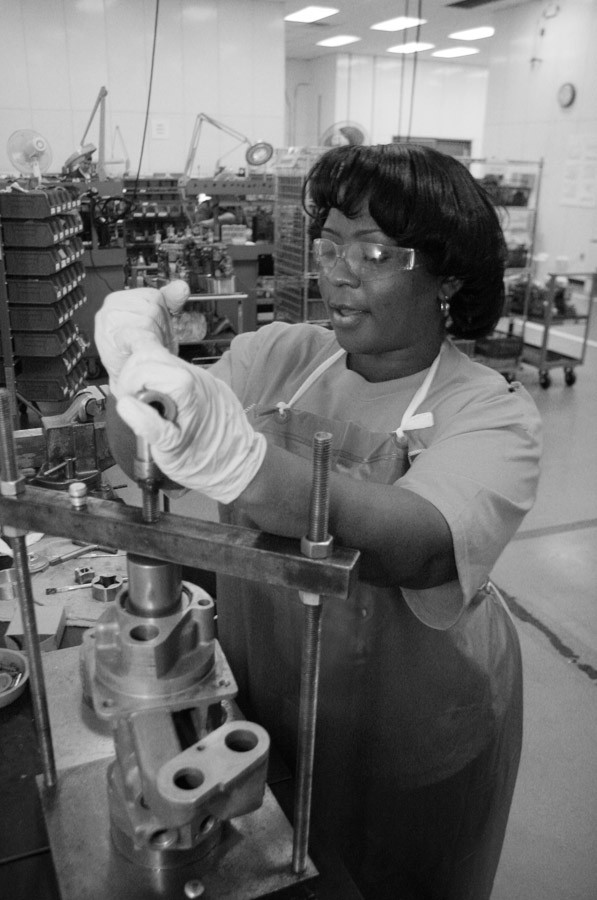Two maintenance programs are in the running for an annual award that recognizes public sector facilities for achieving excellence in manufacturing, and auditors expected here Tuesday will help determine the outcome.
Anniston Army Depot submitted achievement reports to Shingo Prize administrators for both the Field Artillery Ammunition Support Vehicle assembly line and the turbine value stream, or TVS. These programs have been selected as candidates for one of four public sector Shingo Prize categories-bronze, silver, gold and platinum.
Improvements in the FAASV assembly line and TVS production processes are scheduled to be evaluated by Shingo Prize auditors who will use their assessment to score the depot's achievements in lean manufacturing.
"The examiners will talk to everyone they can who is part of the processes there to help determine the degree to which the depot meets the award criteria," said Bob Miller, executive director for the Utah-based Shingo Prize.
The FAASV assembly line is part of the depot's vehicle value stream. The vehicle system is paired on a one-for-one basis with the Army's Paladin self-propelled howitzer. And the TVS here repairs and overhauls the M1A1 drive train, which consists of the AGT 1500 engine and the X100-3B transmission.
'Leaning' the way
Lean initiatives underway here bring members of the manufacturing and defense industry to Anniston Army Depot to explore the improvements made in production processes.
The week of May 21, members from the Heavy Brigade Combat Team program management office at U.S. Army Tank-automotive and Armaments Command - Life Cycle Management Command met with depot officials and toured the FAASV assembly line and other secondary lines here.
"The FAASV is the model overhaul line," said Daniel Malinowski, Paladin and FAASV systems integrator for the fire support platform division of HBCT. "We're seeing the same mentality and philosophy take shape in other shops on depot."
Techniques and tools such as takt time, one-piece flow and kanbans help those on the shop floor produce more products in less time. According to Chuck Gunnels, turbine value stream process manager, and Tim Stewart, vehicle systems branch chief, their respective manufacturing processes reduce cost and increase throughput while maintaining high quality standards.
Safety is an added benefit of the lean processes implemented in all of the depot's production processes. Employees on the FAASV assembly line in Bldg. 400 have reduced their risk for injuries by eradicating the presence of wood pallets and using better-organized tool boxes that leave less room for accidents, said Stewart.
And the turbine value stream has a steady decrease in days lost to accidents, despite the number of employees increasing.
"People here on the turbine engine line are always focused on what they are doing with regards to quality and safety," said Gunnels. "Safety is top priority."
Eye on the prize
Employees on the depot's FAASV and turbine value stream production lines are looking forward to the visit from the Shingo auditors.
"Being entered as candidates is great for the depot and for our customers," said Stewart. "We want to win this for the depot commander and all of the employees who work so hard to support the field Soldiers."
Gunnels said workers in the depot's turbine engine shops are highly involved in daily lean activities, which helped reduce manhours by 16 percent and increase production by 35 percent in one of its production areas.
"As candidates for this award, we are being recognized, industry-wide, for the great job we do every day," said Gunnels.
Several mechanics on the FAASV assembly line have developed their own quality statements, which are displayed on workstations down the assembly line. This gives them the opportunity to tell others what it means to them when they continue to produce quality products for the warfighter, said Stewart.
One of the quality slogans is from Jeremy Ford, a mechanic on the line whose sign reads: No matter where you go, our quality is there.
Because the Shingo auditors are from the private industry, their evaluation of the depot's lean processes will give ANAD an insight to its strengths and weaknesses, said Patti Sparks, chief, enterprise excellence division here.
"This award is a benchmark in world-class production standards," said Sparks.
Editor's note:
Takt is the rate or time a completed project is finished. It may also be referred to as the buying rate or sell rate. The latest line operation used in the FAASV and turbine value stream production operations here is the one-piece flow, which refers to the concept of moving one work piece at a time between operations within a work cell. A kanban signals a cycle of replenishment for production and materials, and here it is in the form of color-coded rectangles on the floor, showing everyone that everything in the line has a place.




Social Sharing